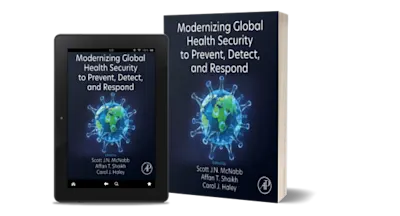LIMITED OFFER
Save 50% on book bundles
Immediately download your ebook while waiting for your print delivery. No promo code needed.

Marine Enzymes Biotechnology: Production and Industrial Applications, Part II - Marine Organisms Producing Enzymes provides a huge treasure trove of information on marine organisms… Read more
LIMITED OFFER
Immediately download your ebook while waiting for your print delivery. No promo code needed.

Marine Enzymes Biotechnology: Production and Industrial Applications, Part II - Marine Organisms Producing Enzymes provides a huge treasure trove of information on marine organisms. Nowadays, marine organisms are good candidates for enzymes production and have been recognized as a rich source of biological molecules that are of potential interest to various industries.
Marine enzymes such as amylases, carboxymethylcellulases, proteases, chitinases, keratinases, xylanases, agarases, lipases, peroxidase and tyrosinases are widely used in the industry for the manufacture of pharmaceuticals, foods, beverages, and confectioneries, as well as in textile and leather processing, and in waste water treatment.
The majority of the enzymes used in the industry are of microbial origin because microbial enzymes are relatively more stable than the corresponding enzymes derived from plants and animals.
Novice and experts in the field of marine biotechnology, microbiology, marine biology and biochemistry and comprehensive material for students, scholars, scientists and industrialists in the field in marine microbial biotechnology
Chapter One: Marine Microorganism: An Underexplored Source of l-Asparaginase
Chapter Two: Marine Microbes as a Potential Source of Cellulolytic Enzymes
Chapter Three: Extremozymes from Marine Actinobacteria
Chapter Four: Enzymes From Rare Actinobacterial Strains
Chapter Five: Bioprospects of Microbial Enzymes from Mangrove-Associated Fungi and Bacteria
Chapter Six: Mechanism and Aquaculture Application of Teleost Enzymes Adapted at Low Temperature
Chapter Seven: Usefulness of Alginate Lyases Derived from Marine Organisms for the Preparation of Alginate Oligomers with Various Bioactivities
Chapter Eight: Marine Microbial Amylases: Properties and Applications
Chapter Nine: Enzyme Immobilization: An Overview on Methods, Support Material, and Applications of Immobilized Enzymes
SK
He received his M.Sc. and Ph.D. degrees from Pukyong National University and conducted his postdoctoral studies at the Laboratory of Biochemical Engineering, University of Illinois, Urbana-Champaign, Illinois, USA. Later, he became a visiting scientist at the Memorial University of Newfoundland in Canada.
Dr. Kim served as president of the ‘Korean Society of Chitin and Chitosan’ in 1986-1990, and the ‘Korean Society of Marine Biotechnology’ in 2006-2007. To the credit for his research, he won the best paper award from the American Oil Chemists’ Society In 2002. Dr. Kim was also the chairman for ‘7th Asia-pacific Chitin and Chitosan Symposium’, which was held in South Korea in 2006. He was the chief-editor in the ‘Korean Society of Fisheries and Aquatic Science’ during 2008-2009. Also, he is the board member of International Society of Marine Biotechnology (IMB) and International Society of Nutraceuticals and Functional Food (ISNFF).
His major research interests are investigation and development of bioactive substances from seafood processing wastes and other marine sources. His immense experience of marine bio-processing and mass-production technologies for marine bio-industry is the key asset of holding majorly funded Marine Bio projects in Korea. Furthermore, he expended his research fields up to the development of bioactive materials from marine organisms for their applications in oriental medicine, cosmeceuticals and nutraceuticals. To date, he has authored around 650 research papers, has edited more than 70 books and holds 120 patents.
FT